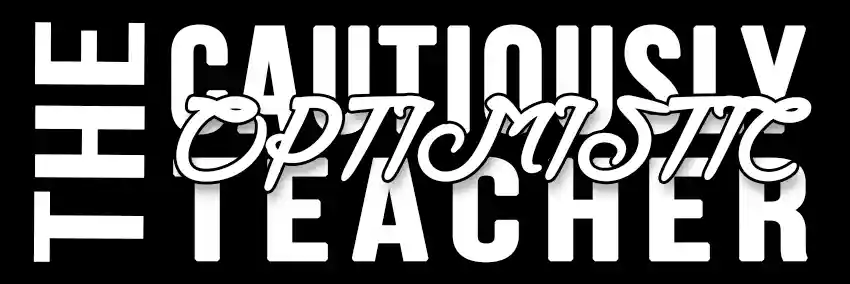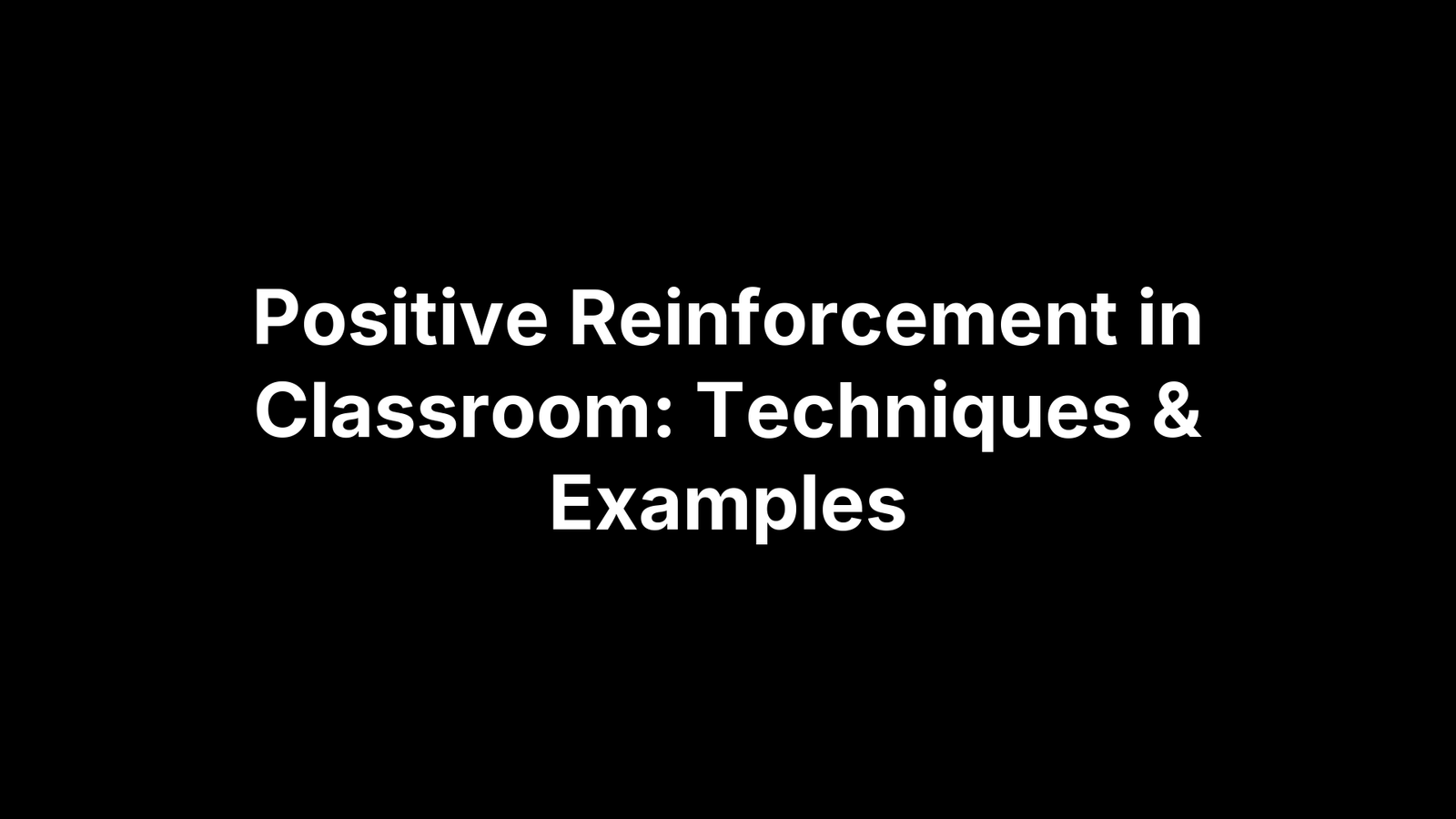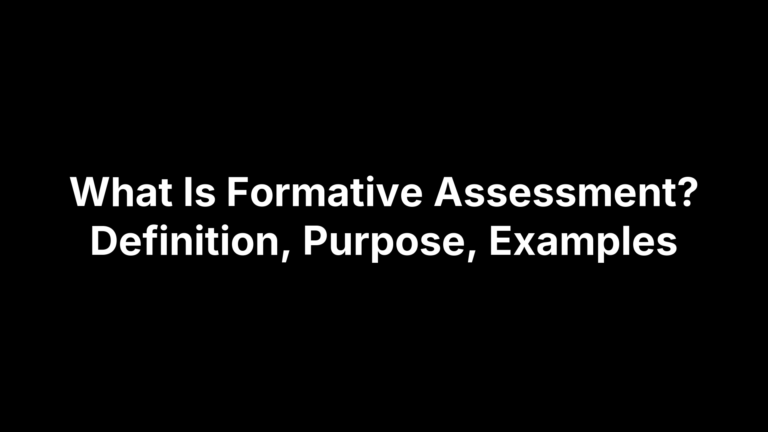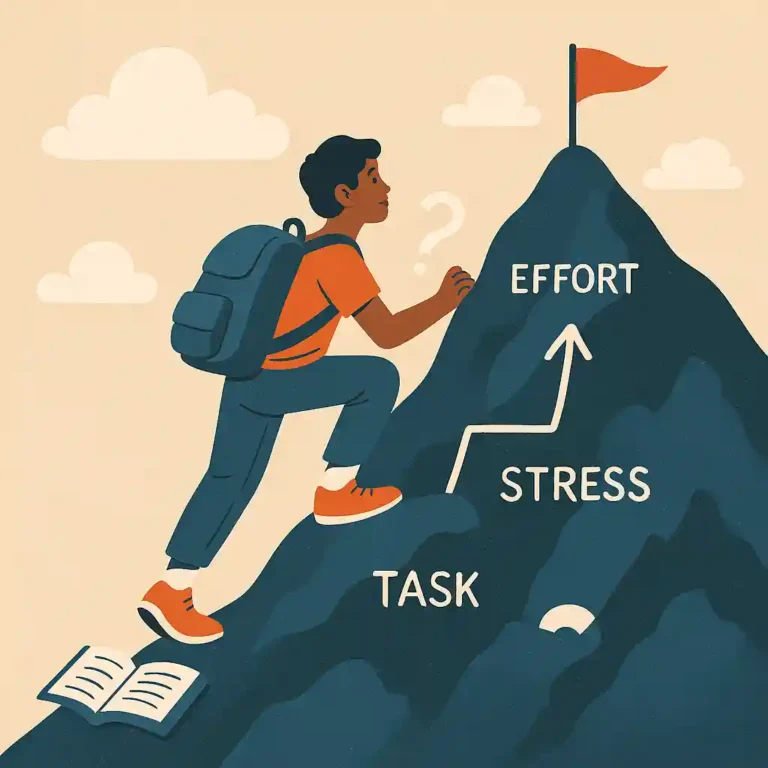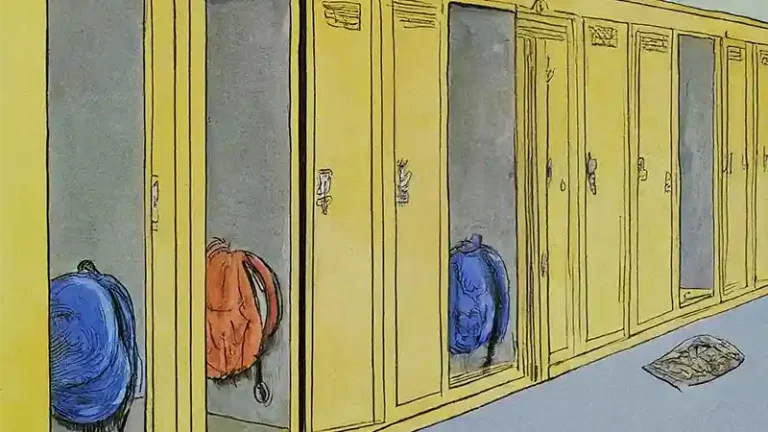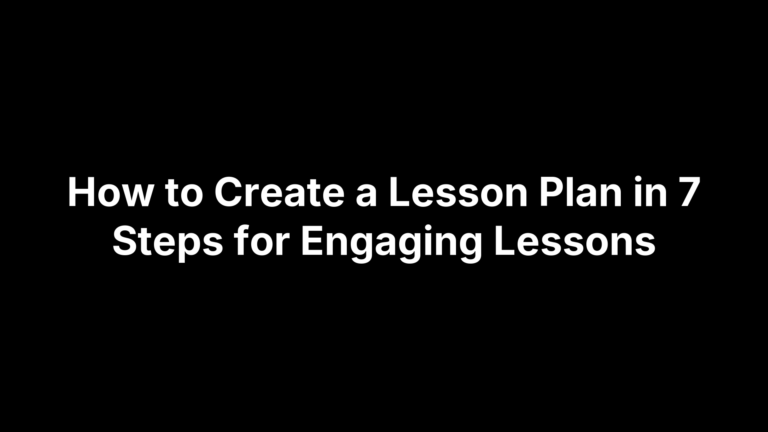Positive Reinforcement in Classroom: Techniques & Examples
Positive reinforcement means delivering a rewarding consequence after a desired student behavior so the behavior is more likely to recur. Teachers reach for it because it curbs constant reprimands, lifts on-task attention, and creates a room where students are noticed for what they do right instead of what they do wrong. When the class runs itself, instructional minutes grow, stress shrinks, and relationships strengthen. But how do you swap praise for punishment without handing out candy every five minutes?
This guide covers everything: the theory that powers reinforcement, the evidence behind it, and a blueprint for fitting a system to your unique group. You’ll find a cafeteria-style menu of techniques, step-by-step launch plans, answers to common hiccups, plus printable charts and token boards ready for tomorrow’s bell. Let’s start with what positive reinforcement actually is and how it differs from other behavior strategies.
What Is Positive Reinforcement? Key Concepts Teachers Need to Know
Before we start deciding between stickers, marbles, or high-fives, it helps to anchor ourselves in the science. Positive reinforcement in classroom settings grows out of behaviorist theory, but you don’t need a psych degree to use it well. The key idea is simple: behaviors that get something pleasant tend to show up again, while those that don’t fade away. The next three mini-lessons give you the vocabulary you’ll need when explaining the system to students, administrators, or caregivers.
Definition & Behaviorist Roots
Mid-20th-century psychologist B. F. Skinner called this cause-and-effect loop “operant conditioning.” In his research, animals (and later children) pressed levers or raised hands because the action produced a reward. In teacher talk: if it makes the good behavior happen more often, it’s reinforcement. If it reduces a behavior, it’s punishment. “Positive” and “negative” don’t judge morality—they describe whether something is added or taken away after the behavior.
Positive vs. Negative Reinforcement vs. Punishment
| Term | What it looks like in class |
|---|---|
| Positive Reinforcement | Add something students like. Scenario 1: “Dina, thanks for citing evidence—take a research badge.” Scenario 2: Class earns two minutes of music for lining up quietly. |
| Negative Reinforcement | Remove something students dislike. Scenario 1: Skip a nightly problem set when everyone finishes in-class practice. Scenario 2: Turn off timer beeper once group work hits indoor-voice level. |
| Positive Punishment | Add something unpleasant. Scenario 1: Extra worksheet after off-task talking. Scenario 2: Lunchtime detention for hallway horseplay. |
| Negative Punishment | Take away something pleasant. Scenario 1: Lose tech time for drawing on iPad case. Scenario 2: Forfeit recess equipment after rough play. |
Notice that only the first two rows raise the odds of a behavior happening again; the bottom rows try to suppress behaviors and often come with side effects like resentment or avoidance.
The Four Types of Positive Reinforcers
Natural – The built-in payoff that springs from the activity itself. A fourth-grader beams after finishing a self-chosen coding project; a senior relishes applause after a slam-poetry reading.
- Pros: zero cost, fuels intrinsic drive.
- Watch-for: may need teacher spotlighting (“How proud do you feel right now?”) to stick.
Social – Human signals such as verbal praise, a smile, shoulder tap, class shout-out, or a quick note home.
- Pros: instant, flexible, relationship-building.
- Fade by: gradually shifting from public praise to private nods as habit solidifies.
Token – Points, tickets, digital badges, marbles in a jar, or avatar coins.
- Pros: concrete, trackable, exciting for group goals.
- Cons: can inflate; publish an “exchange rate” and review weekly to keep value stable.
Tangible – Physical items or privileges: stickers for first-graders, scratch-off reward cards for middles, homework pass for high schoolers.
- Pros: powerful jump-start for tough behaviors.
- Cons: costs money, can create dependency; pair with social praise and fade to intermittent use.
Armed with these concepts, you’re ready to pick the reinforcer that matches your learners and the behavior you want to see bloom. Up next: the evidence showing why this isn’t just feel-good fluff.
The Science-Backed Benefits of Positive Reinforcement in the Classroom
Veteran teachers often say they can feel the room change when students are recognized for doing things right. Research agrees. Decades of experimental and classroom-based studies show that well-planned positive reinforcement doesn’t just make students smile—it measurably lifts academic performance, social-emotional skills, and day-to-day management efficiency. Below is a quick tour of the data so you can defend your strategy at the next team meeting or IEP review.
Academic Gains and On-Task Behavior
When a behavior earns timely, meaningful reinforcement, the brain releases dopamine, a neurotransmitter tied to attention and memory. That chemical nudge helps students stay locked in on the very task you want repeated. Meta-analyses covering hundreds of K–12 classrooms report:
- 20 %–30 % increases in assignment completion when teachers pair specific praise with a token system.
- Significant jumps in reading fluency and math fact accuracy after teachers deliver a 3:1 praise-to-correction ratio.
- Noticeable extension of seat-work stamina in ADHD populations when reinforcement is immediate and frequent (e.g., every two correct responses).
Socio-Emotional Growth
Positive reinforcement in the classroom isn’t only about grades; it also shapes how students see themselves and interact with peers. Behavior-specific praise teaches students to link effort with outcome, a cornerstone of growth mindset. Over time learners internalize statements like “I can improve with practice,” boosting self-efficacy. Reinforced cooperative behaviors—sharing materials, inviting a partner into a group—translate into stronger peer acceptance and align with CASEL’s self-management and relationship skills competencies.
Efficient Classroom Management
A strategic reinforcement plan reduces the need for reactive discipline. Studies comparing schools that train teachers in positive reinforcement with control schools show:
- 40 % fewer verbal disruptions during transitions.
- Transition times shaved by an average of two minutes per period—hours reclaimed over a semester.
- Lower teacher stress scores, attributed to redirection changing from confrontation to acknowledgment.
Snapshot of Supporting Research
- Teachers who maintain a 5:1 praise-to-correction ratio see 30 % fewer disruptive incidents.
- Variable-ratio token systems boost correct responses by roughly 25 % compared to fixed-interval schedules.
- Social praise paired with student reflection statements doubles maintenance of desired behavior four weeks post-intervention.
- Group contingency games (e.g., Good Behavior Game) cut off-task behavior in half within three weeks.
- Preschoolers exposed to daily labeled praise display a 15 % increase in prosocial acts such as sharing and helping.
Taken together, these findings confirm what seasoned educators intuitively know: reinforcing positive actions is one of the quickest, most cost-effective levers for improving learning and climate simultaneously.
Preparing Your Classroom Environment for Positive Reinforcement
The best reward menu in the world falls flat if the classroom isn’t primed for it. A little front-loading—clarifying expectations, learning what excites your students, and designing a system everyone can see and trust—prevents 95 % of later hiccups. Think of this prep phase as laying track before the train leaves the station.
Setting Clear, Observable Behaviors and Rules
Vague goals (“be respectful”) invite arguments; concrete behaviors (“use kind words”) do not.
- Draft 3–5 positively worded rules that anyone could film with a phone.
- Use this quick template on chart paper or Slides:
| Rule # | What It Looks Like | What It Sounds Like |
|---|---|---|
| 1 | Feet on floor | “Excuse me” when passing |
Post the chart at eye level, teach each rule with modeling and student role-play, then practice quick “Yes/No” checks so learners know exactly what earns reinforcement.
Knowing Your Students’ Motivators
A reinforcer only works if the recipient wants it. Run a lightning-fast Preference Survey during the first week:
- Grades K–2: show pictorial cards (stickers, extra recess, teacher’s chair).
- Grades 3–12: Google Form with drag-and-drop ranking.
Include sensory-friendly and culturally relevant options—noise-canceling headphones, bilingual shout-outs, music choice—to honor neurodiversity and background. Revisit surveys every quarter; interests change.
Equity and Fairness Considerations
Reinforcement should feel encouraging, not exclusive.
- Rotate public praise so every name is heard.
- Use private notes for shy or over-praised students.
- Watch gendered language (“good girl/boy” → “good teamwork”).
- When awarding tangible items, give comparable choices to avoid socioeconomic spotlighting.
Creating Visible Reinforcement Systems
Students stay invested when progress is literally on the wall. Place token jars, class thermometers, or digital leaderboards where lines naturally form—by the door or pencil sharpener—so updates happen without ceremony.
Design tips:
- Color-code for accessibility (green = on-track).
- Keep marker pens or QR scanners within arm’s reach of students so they can self-record under supervision.
- Pair visuals with a brief oral recap (“We earned two marbles for starting journals in under one minute!”) to reinforce cause and effect.
With expectations crystal-clear, motivators identified, and a fair, visible system in place, you’ve built the runway for positive reinforcement to take off smoothly.
Choosing Effective Reinforcers: 4 Types and When to Use Each
Selecting the right reward is half the battle. A sticker that fires up a first-grader may prompt eye-rolls from a tenth-grader, while constant public praise could overwhelm a student with social anxiety. Below you’ll find a quick user’s guide to the four positive reinforcer categories and a cheat-sheet for matching them to the behaviors you’re targeting.
Natural Reinforcers: Fostering Intrinsic Motivation
Natural reinforcers are the “feel-good” outcomes built into a task—satisfaction, autonomy, authentic audience reaction. Spotlight them by asking reflection questions (“How did publishing your article online feel?”) or by letting students share work publicly. Natural reinforcers are ideal for sustained, self-directed behaviors like finishing a Genius Hour project because they cultivate ownership and can be maintained with minimal teacher input.
Social Reinforcers: Verbal & Nonverbal Praise Done Right
Social reinforcement is fast, free, and backed by mountains of research. Use the praise formula: Name + Specific Behavior + Impact—“Jordan, you cited three sources, which makes your argument stronger.” Pair words with nonverbals—thumbs-up, quick shoulder tap, proximity praise. Rotate recipients and shift from public to subtle acknowledgments over time to avoid the “teacher’s pet” vibe.
Token Reinforcers: Points, Tickets, and Class Currency
Tokens transform abstract progress into something students can count. Decide in advance:
- Individual vs. group economy
- Exchange rates (e.g., 10 points = choose a Kahoot song)
- Banking rules (reset weekly or roll over?)
Prevent “token inflation” by periodically increasing prices or offering limited-time bonuses rather than endless giveaways. Digital options like ClassDojo badges work well for older students who live on their devices.
Tangible Reinforcers: From Stickers to Homework Passes
Tangible items pack a motivational punch, especially when you’re jump-starting a brand-new routine. Keep them low-cost and age-appropriate: scratch-off cards for middle school, bonus phone break for high school. Mind allergies and school policies for food rewards. Always pair the item with social praise so the physical object doesn’t become the sole focus.
Matching Reinforcer to Behavior Intensity
One size never fits all. Use the matrix below to calibrate:
| Behavior Intensity | Examples | Best-Fit Reinforcers |
|---|---|---|
| Low-effort, high-frequency | Raising hand, pushing in chair | Social (quick praise), occasional token |
| Moderate | Completing daily warm-up, smooth transition | Tokens toward class privilege, small tangible (sticker) |
| High-effort, low-frequency | Publishing newsletter, perfect attendance month | Tangible privilege (homework pass), ceremony that highlights natural pride |
| Long-term Habit Formation | Consistent growth in reading level, leadership roles | Natural satisfaction, public recognition, gradually thinned tokens |
When in doubt, start rich—then fade. A well-timed switch from tokens to natural pride not only sustains the behavior but also nudges students toward intrinsic motivation, the gold standard of classroom management.
Proven Positive Reinforcement Techniques (With Detailed Examples)
You now know which rewards work and why. The next step is execution—those moment-to-moment moves that make students think, “My effort matters.” Below are six battle-tested techniques that fold neatly into any lesson plan. Mix and match based on age, subject, and the amount of prep you can stomach. Each one takes the principles of positive reinforcement in classroom practice and turns them into habits both you and your learners can keep.
Behavior-Specific Verbal Praise
Words are still the quickest currency. Follow three rules—immediate, descriptive, sincere—and you’re golden.
Sample scripts:
- “Aaliyah, your use of transition words made the paragraph flow.” (ELA)
- “Marcus solved for
xwithout skipping a step—solid precision!” (Math) - “Paula, you hustled back on defense and saved a point.” (PE)
- “Diego, citing evidence strengthened your debate claim.” (Social Studies)
- “Liu, I noticed you reread the problem before answering.” (Science)
- “Sky, your quiet signal helped the group reset.” (Art)
Nonverbal Signals and Proximity Praise
Sometimes a thumbs-up says more than a speech. Use eye contact, a nod, or place a sticky note on a student’s desk as you circulate. Stand briefly beside an on-task group; your presence doubles as acknowledgment without interrupting flow. Combine with a silent gesture—tap the rubric box they nailed—to reinforce discreetly in testing environments.
Group Contingencies
Leverage teamwork by linking the whole class (or pods) to a common goal.
- Independent: each group earns its own reward tally.
- Interdependent: class marble jar must hit the line for everyone to earn extra recess.
- Dependent (“hero”): one mystery student’s behavior decides if the class gets the prize, keeping peers positively invested in each other’s success.
Token Economy Systems
Tokens translate abstract praise into something students can count. Quick rollout:
- Pick a theme (tickets, digital points).
- Establish exchange menu and prices.
- Teach students to self-record under supervision.
- Review balance weekly; adjust values to prevent inflation.
Digital hack: a shared Google Sheet with conditional formatting turns green when goals are met—instant visual feedback.
Menu of Privileges & Activity Rewards
Privileges often outshine trinkets. Offer a rotating “reward menu” so novelty stays high:
| Time Needed | Low-Prep Options | Why It Works |
|---|---|---|
| 5 min | Choose entrance music | Public celebration |
| 10 min | Work in hallway nook | Autonomy & status |
| 15 min | Be class DJ during independent work | Social spotlight |
| Whole period | Genius Hour pass | Builds intrinsic drive |
Gamification and Badging
Layer game elements onto everyday tasks: levels, boss battles against the “Timer Monster,” or collectible badges for mastering standards. Keep leaderboards anonymous (use avatars) to avoid shaming. Award digital badges via LMS or printable stickers; pair each with a reflection prompt like, “What strategy got you to Level 2?” so the fun feeds long-term skill building.
Implementing and Scaling Your Reinforcement Plan: Step-By-Step Guide
You’ve picked reinforcers, created a visible system, and taught expectations. Now it’s time to launch the plan and keep it humming all year. The five steps below walk you from Day 1 rollout to long-term sustainability. Follow them in order, but treat them as a living cycle—collect data, tweak, and circle back whenever student needs shift.
Step 1: Define Target Behavior and Success Criteria
Start with one or two high-leverage behaviors; piling on twenty targets dilutes focus. Use a SMART + Observable statement:
- “During independent reading, each student stays seated, eyes on text, and voice level 0 for
15minutes, four days a week.”
Check that any adult walking in could rate the behavior the same way you do.
Step 2: Teach Expectations and Reinforcement System
Dedicate a short mini-lesson—think 10–12 minutes—to model both the behavior and the reward process.
- Explain why the behavior matters (“quiet reading builds stamina”).
- Model the correct action; then model the wrong way for comic relief.
- Let students practice while you narrate successes.
- Reveal the reinforcement menu and show how tokens or points are earned and spent.
Anchor charts, quick role-plays, and student “tour guides” keep the explanation sticky.
Step 3: Deliver Reinforcement Immediately and Consistently
Timing is everything in positive reinforcement in classroom practice. Aim for:
- Within
5seconds for primary grades - Before the period ends for secondary
Maintain a praise-to-correction ratio of at least 5:1. If you miss a reinforcement window, acknowledge it later (“I meant to shout out your collaboration earlier—great job!”) so credibility stays intact.
Step 4: Monitor and Gradually Thin the Schedule
Begin with continuous reinforcement—every correct response earns a token or praise. After the behavior solidifies (usually 1–2 weeks), shift to a variable ratio: every second, third, or random instance. This prevents satiation and mirrors real-world contingencies. Use a simple tally app or paper tracker to watch for backsliding; if rates dip, briefly increase frequency before thinning again.
Step 5: Involve Families and Caregivers
Consistency across settings supercharges results. Send a one-page overview or short video explaining:
- Target behaviors
- How reinforcement works
- Simple ways families can echo praise at home
Provide quick-check templates like “Today I earned __ tokens by __.” Caregivers sign or text back an emoji—no homework-sized burdens. When home feedback aligns with classroom systems, students generalize skills faster and your reinforcement plan scales beyond four walls.
By cycling through these steps—teach, reinforce, monitor, adjust—you’ll keep the momentum alive and continue shaping behaviors that make learning stick.
Measuring Impact and Fine-Tuning Your Approach
Positive reinforcement is only powerful if it actually changes behavior. A quick pulse check every week keeps you from flying blind, helps you decide when to crank up praise, and signals when it’s safe to fade tokens. The good news: you don’t need a Ph.D. in statistics. A clipboard, a two-column tally sheet, or a simple Google Form will do the heavy lifting.
Collecting Behavior Data
- Pick one observable indicator per target behavior—e.g., “raises hand before speaking.”
- Choose a sampling window: the first 10 minutes of independent work or every science lab.
- Use easy tools:
- Tally marks on a sticky note
- ABC chart app (records Antecedent-Behavior-Consequence)
- Digital trackers like Google Sheets with automatic time stamps
- Record baseline for three days before introducing reinforcement; this becomes your comparison point.
- Keep data student-friendly. Allow older learners to self-monitor with colored counters or clicker counters to build ownership.
Analyzing Trends and Adjusting Mid-Course
Convert raw tallies into simple visuals: a line graph or bar chart that shows baseline versus each subsequent week. Look for:
- Upward trend – behavior is increasing; maintain or begin thinning reinforcement.
- Flat line – no change; check if the reinforcer is truly motivating or if criteria are unclear.
- Downward dip after initial rise – likely satiation; rotate rewards or switch to a variable schedule.
Decision rule: if you see no statistically noticeable bump (≈10 % change) after two weeks, tweak one element—reward frequency, type, or the clarity of your success criteria—rather than scrapping the whole system.
Fading External Reinforcers Toward Intrinsic Motivation
The endgame is students doing the right thing because it feels right, not just for points. Gradual fading keeps gains intact:
- Move from continuous to intermittent reinforcement (e.g., every third occurrence, then random).
- Pair praise with reflection prompts: “What strategy helped you stay on task today?”
- Shift the spotlight to natural reinforcers—pride in completed work, peer recognition, authentic publication.
- Celebrate milestone independence publicly (“We hit 90 % on-task without tokens this week!”), then retire the external system.
By cycling through data collection, analysis, and calibrated fading, you’ll keep positive reinforcement in classroom practice sharp, sustainable, and ultimately self-driven by your students.
Avoiding Common Mistakes and Misconceptions
Even the most thoughtfully designed reinforcement plan can unravel if a few rookie errors creep in. The good news? Most pitfalls are predictable and easy to correct once you know what to watch for. The mini-guides below flag the five traps teachers report most often and offer practical fixes you can apply before first period tomorrow.
Over-Reinforcing and Creating Dependency
Too many rewards, delivered too often, shift students from “I’m proud of this” to “What do I get?”
- Warning signs: groans when tokens are absent, students bargain for bigger prizes, dip in effort once rewards pause.
- Fix it fast:
- Switch to a variable ratio schedule (random, not every instance).
- Pair every tangible with reflective praise (“Notice how your focus helped you finish early—how does that feel?”).
- Gradually replace tokens with natural outcomes like extra project choice.
Accidental Reinforcement of Undesired Behavior
Attention—positive or negative—can strengthen whatever precedes it. If you lecture an off-task student for two minutes, you may be reinforcing the disruption with your spotlight.
- Use planned ignoring for minor misbehavior while immediately praising a nearby peer demonstrating the desired action (“I appreciate Maya’s quiet start on the warm-up”).
- Keep redirections brief, neutral, and free of drama; save rich interaction for positive moments.
Equity Pitfalls and Perceived Favoritism
Students track fairness with laser precision. Uneven praise can erode trust quickly.
- Rotate names using randomizers or seating charts so every student receives public acknowledgment over time.
- Offer multiple reward options of equal value to accommodate cultural, gender, and neurodiversity differences.
- When a student receives frequent reinforcement for catching up, quietly explain the individualized goal so peers understand expectations are equitable, not identical.
Mixing Reinforcement With Punishment
Clip charts, card-pulling, and other public penalties mingle rewards and shame, muddying the message. Research shows the negative emotion tied to punishment can cancel the uplifting power of reinforcement.
- Separate systems: keep restorative conversations private and reinforcement public.
- Replace loss-based tools with positive tracking (e.g., move avatars up levels rather than down).
Myth-Busting: “Positive Reinforcement Is Just Bribery”
Bribery happens before the desired action (“Clean your room for $5”), often to stop an existing problem. Reinforcement is a planned, educational contingency applied after a behavior to build lasting skill.
- Emphasize that reinforcers are tied to clear learning objectives, not impulsive pay-offs.
- Share data with stakeholders showing sustained behavior change even after rewards fade—proof it’s teaching, not bribing.
Dodging these common errors keeps the focus where it belongs: celebrating progress, nurturing autonomy, and making positive reinforcement in classroom settings a reliable engine for growth.
Bringing It All Together—for Happier, Engaged Learners
Positive reinforcement in classroom practice boils down to a repeatable loop: define the behavior, pick a motivating reinforcer, teach the expectation, deliver recognition fast and fairly, then track results and tweak. When those five moves run smoothly, students internalize the connection between effort and outcome, habits stick, and the need for reactive discipline plummets.
The payoff is felt everywhere. Lessons start on time because transitions are snappy. Group work hums instead of fizzles. Kids who once hid in the back volunteer answers, buoyed by specific praise that names their growth. You spend less energy policing and more energy teaching, which is why you signed up for this job in the first place.
Ready to put these ideas to work? Download our free printable token charts and try the AI Worksheet Maker to build quick-reinforcer activities. Both resources are waiting for you at The Cautiously Optimistic Teacher. Your future self—and your students—will thank you.
